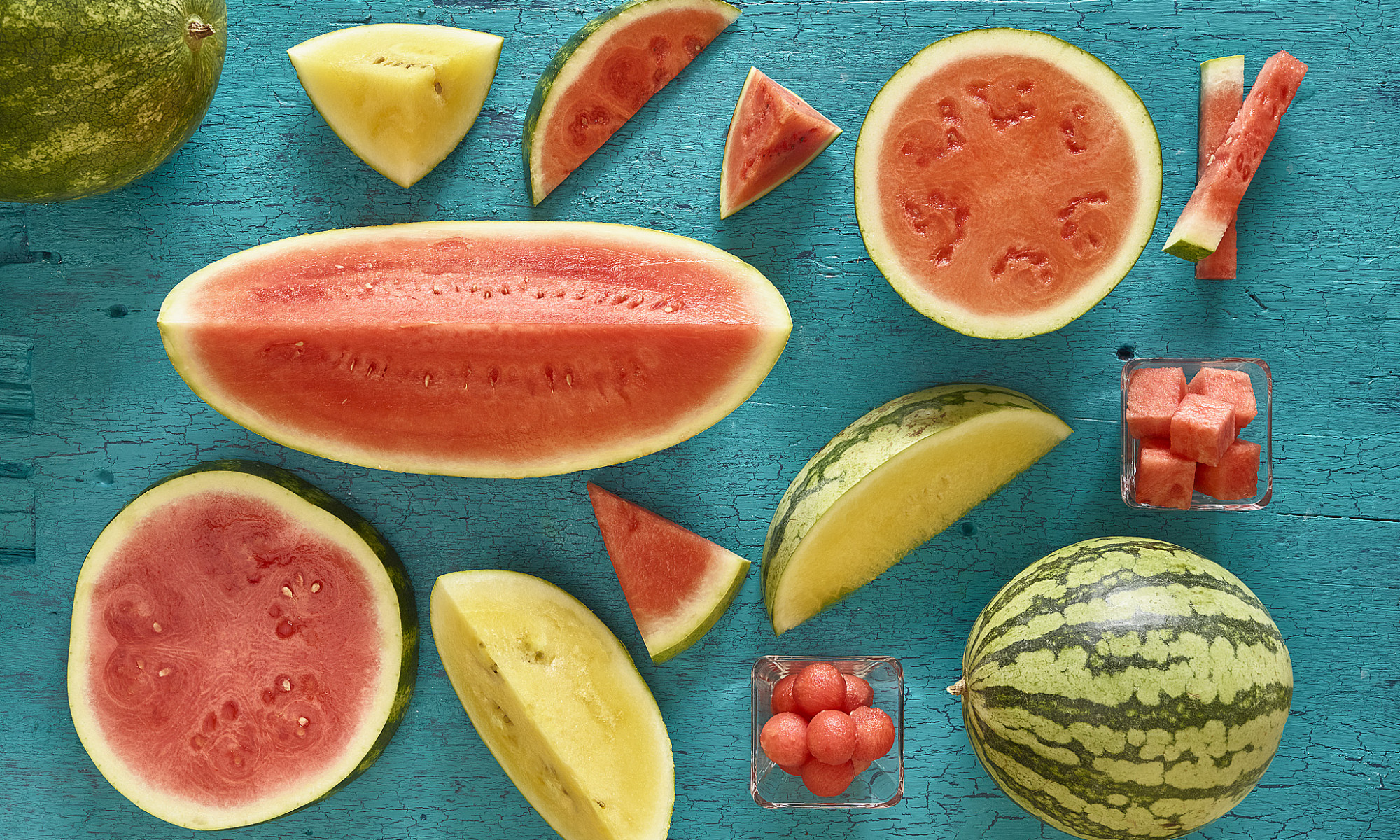
We’re all familiar with the classic red wedge from a round watermelon. But DYK? There are other shapes and colors of watermelon, too! 🍉 With so many varieties, watermelon is instead grouped by characteristics, such as shape, rind color or pattern, and size.
Seeded
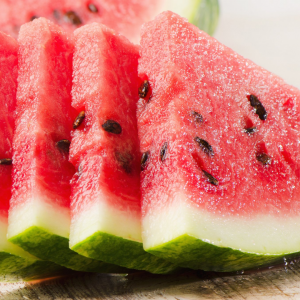
A classic! Seeded watermelon brings up feelings of nostalgia for a lot of people (spitting seeds off the back porch, anyone?). It’s characterized by a thick green rind, red/pink flesh and black seeds. Available in round, long and oblong sizes, this variety weighs in at 15 to 45 pounds. DYK: The seeds are fertile, meaning if planted, it could grow into a watermelon plant1.
Seedless
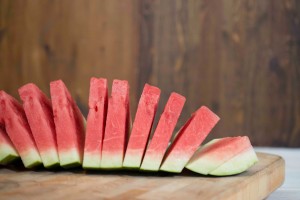
The majority of the watermelons grown today in the U.S. are seedless due to high demand. This variety is a result of hybridization (aka the crossing of two different types of watermelon). Read more about how seedless watermelons are grown in our FAQ Section. Now you may be wondering, what are the white seeds in seedless varieties? Those are hollow shells of seeds that didn’t mature. They are totally edible and harmless to consume. Happy eating! 😋
Mini

Quite possibly the cutest of watermelons, minis are petite, easy to handle and range anywhere between 1 and 7 pounds. The thin rind means there’s more flesh per pound. Score! 🙌 Try hollowing out your next mini for a fun, compostable serving bowl.
Yellow
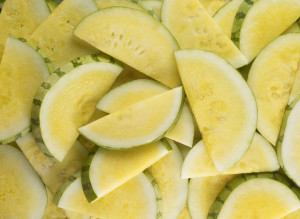
Traditional red watermelon gets its iconic red color from lycopene (a carotenoid). So how can watermelon flesh be yellow? It lacks lycopene. While the flesh is a different color, the outer rind doesn’t differ from red watermelon and they can be either seeded or seedless. They can sometimes be sweeter2 than red, are round in shape and weigh 10 to 30 pounds.
Orange
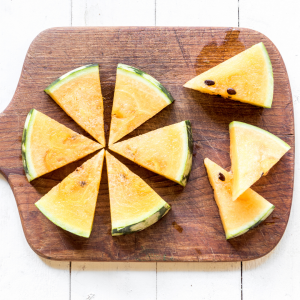
Similar to yellow, orange watermelon also lacks lycopene. This variety typically has a light green rind with dark green stripes. Specialty Produce explains that the “bright orange-colored flesh has a crisp, juicy texture and a flavor which can vary from mildly sweet to super sweet depending on variety.” Orange watermelon can be round or oblong and varies between 10 and 30 pounds.
Square
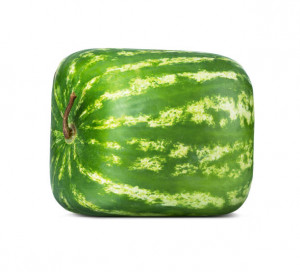
Chances are you’ve seen these trendy, hip square watermelons on your social feed before. So, what’s the story behind this kind of watermelon? This idea came from Japanese farmers in search of a solution on storing watermelon in a way that would take up less room in the fridge and limit rolling around3. They are grown in square glass boxes that mold the fruit until it forms into a 3 square inch square. The more labor-intensive growing process means this type is pricier than your average watermelon.
No matter which you choose, your selection is guaranteed to be delicious! 🍉
1https://www.thekitchn.com/whats-the-difference-between-seedless-and-seeded-watermelons-233764
2https://www.southernliving.com/food/fruits/melon/watermelon/yellow-watermelons
3https://www.gardeningknowhow.com/special/children/grow-square-watermelons.htm

Comments
T hanks for the article. I didn’t know watermelon comes in different colors. Very informative .
Where do you find different color watermelon?
You’ll have to ask your produce manager at the grocery store you shop at if they are able to source it. Unfortunately we do not have a way of knowing who is growing yellow or orange varieties and shipping them each year. Good luck!
If you have an HEB they have yellow and orange. I know this post was over a year ago but just in case you have not found them. =)
If you have an Amish community near by they grow a variety of melons ..the yellow are my favourites. I had orange meat in Texas years ago. I tried growing the yellow from saved seeds they sprouted vines quickly but the wee melons never made it past a child’s football size. The black mold (?) Killed them. And the gray flat beetles.